
Saturday, December 26, 2009
Pet Rabbit Care; 4 Basic Tips to Get You Started

Rabbit Igloo Hideout
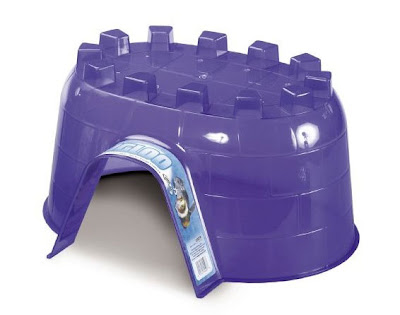
Super Pet Rabbit Large Tropical Fiddle Sticks Hideout
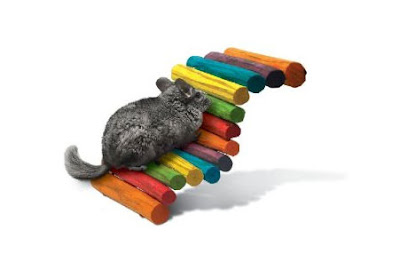
Super Pet Rabbit Grassy Hutch

Monday, December 21, 2009
Peter's Woven Grass Pet Bed

Peter's woven grass pet bed is the ultimate in natural grass cage accessories, that protects your pets sensititve paws from wire cage bottoms and is safe to chew. Try using it as a natural bowl to contain your peter's Timothy Hay or meadow mix forage hay. Buy here.
Saturday, December 12, 2009
Lots Of Fun For Your Bunny

Peter's Woven Grass Play Ball

Bungalow Edible Environt For Rabbit

Learn About Your Rabbit Social Needs
Handling A Rabbit
ArticleCity.com Videos
This video shows rabbit care and how to handle your rabbit. Reviewed in this short video are the proper ways to pick up a rabbit and support them to best avoid injury.
Friday, December 11, 2009
Indoor Rabbit Cages Guide

Possessing an indoor rabbit cage for your rabbit is a wonderful plan on the assumption that you prefer to stay your rabbit inside the home. Bunny rabbit create groovy animal companion, and could easily be maintained inside the house, and if you thoroughly bunny rabbit proof your home, they may love a unrestricted run.
Believe it or not bunny rabbit are relatively without difficulty letter box trained, so it's not rare for people that at that place bunny rabbit run unrestricted inside their home. It's not right to allow your bunny rabbit running unrestricted day in and day out since they by nature enjoy to have a space of safe haven, wherever they may sleep and find safety.
There are a lot of various alternatives for indoor rabbit cages on the marketplace nowadays, but numerous of them aren’t very good pick. There are numerous that are large sufficient, and have wire floorings, although this causes cleaning more simpler, it does not provide good comfortableness for your bunny rabbit.
About indoor bunny rabbit cages size,you had better always get the largest cages that you are able to for your bunny rabbit, larger is unquestionably finer in this situation. If your bunny rabbit is going to stay most of its time and inside its cage, so this is particularly true. Always try to have a cage that is the bare minimal of 4 times the size of your bunny rabbit. If you've a littler bunny rabbit, then you can apply this as a example. You'll need a twenty-four” x thirty-six” cage or so for a smaller bunny rabbit(less than 8 pounds).
For bigger bunny rabbit (heavier than eight pounds), you'll require a cage that's at the least 30” x 36”. The height of an indoor rabbit cage should allow the rabbit to sit up straight, without its ears touching the top. The minimum height I would recommend for your indoor rabbit cage would be 40 cm, but this only a guide. Please use you discretion and if in doubt go for the taller cage.
A lot of people choose for multiple floor bunny rabbit cage with ramps connecting the levels. This grants the bunny rabbit a lot extra room without borrowing more room inside your home.
Owning a wire flooring inside your bunny rabbit cage isn't a good plan if you would like to give comfortableness for your bunny rabbit. While having a wire bed with a pull out and makes for simpler cleaning, it's not all of the time necessary as bunnies are easily litter box trained. If you do add a cage with a wire floor and it had better cover up the floor with wood, or a matting which can give good traction for your rabbits as well as comfortableness.
You had better make certain that the access to the cage is large sufficient for you are able to get the litter box in and out of it. It is likely a wonderful recommendation for you to have a cage with a side door on it, rather than a top opening. This will make it more simpler for you to get the bunny rabbit in and out of the cage, as well as allow the bunny rabbit to escape of the cage by himself if he is a free roamer.
You need to make certain that every of the edges on the opening of the cage are covered so the bunny rabbit won't get injure, and you'll not get scratched up either.
Monday, November 2, 2009
Rabbit Hutch Supplies - 3 Details You Must Have for Your Rabbit Hutch

Shelter for Your Rabbit
A rabbit cage, or "Hutch", is the first thing that you're going to have to have as your rabbit needs a place to live.There is a huge selection of different types of rabbit cages you can buy, anywhere from small ones to condominium size. It all depends on how many rabbits you have as well as the space you have, as to what type of rabbit cage you want to buy.
Waterers
Probably one of the most important things that you need for your rabbit hutch, is a watering system. Water is the most fundamental element to creature lives to survive so you will need to give it this. You can find a lot of different types of watering systems on the market today, some are automated which makes the task of watering your rabbits a lot easier. If you have a bunch of rabbits that you're raising for food, then having an automated water supply could be a real bonus for you and make your life a lot easier. One of the most frequently used and common types of watering devices is the simple type that straps to the outside of the cage with a metal tube that comes out of the bottom. The ones with a tube coming out of the bottom are the ones I always used as a kid growing up raising rabbits.
Rabbit Feeders
Food is the last element that your rabbit needs to survive, so I believe with that said a rabbit feeder is in order. Rabbit feeders are just simple contraptions that sit on the outside of the cage, with an access hole for the rabbit to stick its head in and eat. The other option you could choose besides putting on one of these outside feeders is to place just a normal bowl on the inside of the cage, but this could turn out really messy. Rabbit feeders on the outside of the hutch are always the best option
About The Author
If you're looking for a rabbit hutch sale then follow the link and you will find many quality rabbit hutches that will fit all budgets. http://www.rabbithutchforsale.com
Things to Think About Before Acquiring a Rabbit

Often people purchase rabbits from a breeder. Many people prefer breeders under suspicion that some pet stores sell cross bred rabbits. Such a breeder who has a litter of young rabbits available for sale can be found in the newspaper classified ads listed under "Pets" or "Livestock." Some can be found through rabbit breeders' club publications or through rabbit-related magazines, which often include a breeder listing. With the advent of the Internet, many breeders advertise their stock online.
Finding a local rabbit breeder is generally preferred to shipping rabbits for long distances, as it can be stressful for the animal. Many pet shops nearly always carry smaller breeds of rabbit such as the Netherland dwarf, the Holland lop, and the Mini-Rex. These breeds, although smaller than 'normal' rabbits, still live long and healthy lives. A point to note is that often smaller breeds of rabbits are prone to tooth problems such as malocclusion.
Rabbit rescue organizations or a local humane society are increasingly common places to find adult rabbits, who may already be spayed or neutered and docile from handling. Though most rescued rabbits are healthy, some may require special care for health conditions or behavioral problems resulting from prior abuse.
Training and Play
Pet rabbits can be trained to urinate and defecate in a litter box or on a newspaper in a specific corner of a room. The litter box may also be placed inside the rabbit's cage or the rabbit can be trained to treat the cage itself as the litter box. Litter training becomes much easier once a rabbit is spayed or neutered.
Rabbits cannot learn voice commands like a dog, but can recognize different patterns of the voice. For instance, If a rabbit is disobeying, for example biting, simply make a high pitched noise, or an extremely bass noise and the message will be conveyed. Rabbits can be taught their names, although they recognize the pattern of the noises more then the words. Rabbits are intelligent, and enjoy games and toys.
It is possible to permit a rabbit to run loose in the home if rooms have been rabbit-proofed (i.e. dangerous chewable items such as electric cords are removed from the pet's reach). Rabbits have a tendency to chew on items in their space, particularly wires, although they can be trained not to chew.
It is important that if a rabbit is allowed to roam in a house that it be impossible for the rabbit to chew or get into dangerous or valuable items. They do not possess the same comprehension as a dog or a cat, and often don't understand if punished physically; rather they will become scared or confused if some kind of punishment is used, as they do not see the damage they have done. If all this is taken into consideration, rabbits make excellent house pets.
Companionship
Other rabbits
Unneutered rabbits frequently fight when paired with another rabbit of the same gender. Generally fighting is a result of sexual mounting, which is engaged in by rabbits of both sexes upon other rabbits of either sex; this behavior stresses the rabbit being mounted and can make it aggressive toward its cagemate. Unneutered rabbits of opposite sexes will breed rapidly, so a pet owner should not leave them together, even if they do not fight.
Because of these problems, it used to be preferred to keep rabbits caged individually. However, it is becoming common to spay and neuter pet rabbits allowing male and female rabbits to live together. Fighting can result even from pairing altered rabbits. Keeping rabbits in pairs can limit behavioral problems (such as general aggression, biting or withdrawal) which may arise if rabbits are kept single.
Pairs of bonded and desexed rabbits, usually one of each gender to a pair, can often be adopted from animal shelters. These have usually already had all their major expenses taken care of (desexing) and they will rarely fight or harass each other, taking the trouble out of bonding two separate rabbits.
Guinea pigs
Some books recommend keeping rabbits and guinea pigs together to meet their social needs. While some people have seen success with this technique, the current consensus is that rabbits should never be kept in the same cage with guinea pigs. A rabbit can easily harass or injure a guinea pig; this can lead to severe distress or even death for the guinea pig. It may be unintentional or due to being startled, since the rabbit is larger and stronger so can seriously injure a guinea pig. They also have differing nutritional requirements, so it is therefore preferable that rabbits and guinea pigs are fed separately. Guinea pigs require additional Vitamin C in their diets that rabbits don't. Lack of Vitamin C may lead to scurvy.
Additionally, guinea pigs typically show very little interest in social activities necessary for the rabbit's well-being, such as grooming; this limits the intended benefit of housing the guinea pig and rabbit together in the first place.
Dogs and cats
It is generally recommended that dogs should never be left alone with rabbits as their predatory instincts (or overenthusiastic play) can lead to the dog attacking the rabbit spontaneously. Cats, on the other hand, can become close and safe potential companions if properly introduced to the rabbit and they are of at least roughly equivalent size. In fact, when the cat is introduced in a home with a resident rabbit, the rabbit sometimes will act aggressively to establish his territory and the cat, which does not have such concerns, will typically cede the point to the resident.
Rabbit Hutches

Rabbit hutches can be purchased premade, or, if you are particularly adventurous, you can choose to construct your own. Rabbit hutches should be elevated off the ground and have waterproof tops to protect pets from inclement weather. At The Rabbit Hutch Shop you will find a wide range of rabbit hutches and runs that have been specially designed for your Bunny rabbit. A rabbit hutch is the best choice for a rabbit kept outside. The traditional rabbit hutch is a plywood box, one foot by one foot by four feet in size. Although rabbit hutches are typically used outside, they can be used indoors if space allows.
Choosing a Hutch
Whether you choose a rabbit cage or a hutch, be sure to keep your pet's safety and comfort in mind, avoiding selections that are very small, contain wire bottoms, or have sharp edges. The traditional rabbit hutch is a plywood box, one foot by one foot by four feet in size. Bedding straw should be replaced on a daily basis and the hutch should be cleaned thoroughly each week. A rabbit should be able to stand on its hind legs and stretch out full length in the bed section of the hutch as a bare minimum requirement.
Pet
Pet rabbits should be protected from contact with wild rabbits to prevent infection and this includes the situation where wild rabbits might have contaminated the grass area where you might place a portable run for your pet rabbit. So before you bring one of us rabbits or any pet home really, just make sure you are doing it out of genuine love for the animal and not because of some holiday, or because its trendy. Rabbit hutches and runs sold in pet shops are often woefully inadequate for adult rabbits. This is especially true when people buy pet shop hutches along with a baby rabbit when they have no idea of it's adult size. Also, keep in mind that if you're buying a hutch for a baby rabbit, you should estimate how large your pet can grow up to be and do the math according to his full-grown size. Many people continue to keep their pet in a small hutch, perhaps sited at the bottom of the garden. Your veterinary surgeon can advise you on the vaccinations and annual boosters that are required to keep your pet protected.
Rabbit hutches can be purchased pre-constructed, or, if you are particularly bold, you can choose to construct your own. Although rabbit hutches are typically used outside, they can be used indoors if space allows. Wood rabbit hutches are the most common, with screened-in or wire-mesh sides. Looking at design in addition to size, you need to consider rabbit hutch design when determining your purchase. The roof should also be detachable to aid in the cleaning of the rabbit hutch. A typical rabbit hutch is relatively easy to build, offering your rabbit sturdy and reliable shelter, good ventilation and nest boxes where bunnies can be born. See more
About the author: Kate Riding care for Rabbit Vibrators at her home.
Saturday, August 1, 2009
Havahart 4101 Rabbit Hutch

Rabbit Hutch
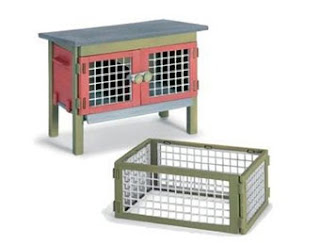
Prevue Rabbit Cage
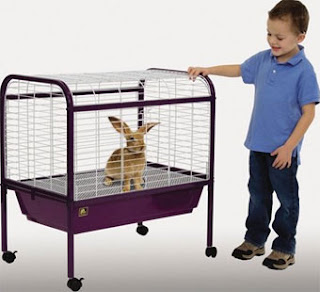
Rabbit Cage Starter Kit

Unique Easy - Care Ribbit Home

Friday, July 3, 2009
A Guide To Rabbit Hutch

The size of your rabbit hutch should be at least 4 times of your rabbit's stretched out length. Some rabbit breeds are larger than the others and this should be taken into consideration in designing the size of your rabbit hutch. Bear in mind also that your bunny rabbit will grow larger in size. The hutch should be high enough to enable your rabbit to stand upright.
You should not house two rabbits together unless they have been neutered or spayed. A male and female rabbit will pro-create few times in a year with as many as 7 bunnies. Two unaltered rabbits of the same gender will fight.
You may buy or build your own rabbit hutch. Building your own hutch for your pet rabbits are not necessary difficult. You may need some carpentry skills. Start with the rabbit hutch by sketching out your design with proper dimensions.
There are two types of rabbit hutch that you may choose - the all-wooden enclosure or the all-wire cage enclosure. The all-wooden enclosure is usually the more common rabbit hutch. In building your rabbit hutch, consider using good-quality plywood. You would want your rabbit hutch to last for a long time to come, probably for the entire lifetime of the rabbit.
One section of the rabbit hutch is usually entirely enclosed. This section may have a wooden floor. The other section of the hutch should be twice the size of the first section and should have a wire bottom. The door should be wired as well. This allows sufficient circulation throughout the hutch.
The other type of rabbit hutch that you can consider is the all-wire cage with wooden frame. This is actually the easier rabbit hutch to build on your own. For the all-wire cage rabbit hutch, you are actually building a wooden frame to hold a typical rabbit wire cage. The rabbit wire cage may be bought from any pet shops. Ensure that the wooden frame is built with legs which set the rabbit hutch to be 3 feet higher than the ground.
You may also want to build a dropping pan which can slide in and out of the cage. The drop pan should be regularly cleaned. If you do not want to build the drop pan, then just allow the rabbit's droppings to fall to the ground.
The all-wire rabbit hutch may be the better option than the all-wooden hutch as there are easier to clean and maintain. Your pet rabbits may urinate at the corner of your all-wooden hutch, and the accumulated ammonia can be very unhealthy to both your pet rabbits and you. It is also damaging to the rabbit hutch.
INDOOR RABBIT CAGES GUIDE

Possessing an indoor rabbit cage for your rabbit is a wonderful plan on the assumption that you prefer to stay your rabbit inside the home. Bunny rabbit create groovy animal companion, and could easily be maintained inside the house, and if you thoroughly bunny rabbit proof your home, they may love a unrestricted run.
Believe it or not bunny rabbit are relatively without difficulty letter box trained, so it's not rare for people that at that place bunny rabbit run unrestricted inside their home. It's not right to allow your bunny rabbit running unrestricted day in and day out since they by nature enjoy to have a space of safe haven, wherever they may sleep and find safety.
There are a lot of various alternatives for indoor rabbit cages on the marketplace nowadays, but numerous of them aren’t very good pick. There are numerous that are large sufficient, and have wire floorings, although this causes cleaning more simpler, it does not provide good comfortableness for your bunny rabbit.
About indoor bunny rabbit cages size,you had better always get the largest cages that you are able to for your bunny rabbit, larger is unquestionably finer in this situation. If your bunny rabbit is going to stay most of its time and inside its cage, so this is particularly true. Always try to have a cage that is the bare minimal of 4 times the size of your bunny rabbit. If you've a littler bunny rabbit, then you can apply this as a example. You'll need a twenty-four” x thirty-six” cage or so for a smaller bunny rabbit(less than 8 pounds).
For bigger bunny rabbit (heavier than eight pounds), you'll require a cage that's at the least 30” x 36”. The height of an indoor rabbit cage should allow the rabbit to sit up straight, without its ears touching the top. The minimum height I would recommend for your indoor rabbit cage would be 40 cm, but this only a guide. Please use you discretion and if in doubt go for the taller cage.
A lot of people choose for multiple floor bunny rabbit cages with ramps connecting the levels. This grants the bunny rabbit a lot extra room without borrowing more room inside your home.
Owning a wire flooring inside your bunny rabbit Cage isn't a good plan if you would like to give comfortableness for your bunny rabbit. While having a wire bed with a pull out and makes for simpler cleaning, it's not all of the time necessary as bunnies are easily litter box trained. If you do add a cage with a wire floor and it had better cover up the floor with wood, or a matting which can give good traction for your rabbits as well as comfortableness.
You had better make certain that the access to the cage is large sufficient for you are able to get the litter box in and out of it. It is likely a wonderful recommendation for you to have a cage with a side door on it, rather than a top opening. This will make it more simpler for you to get the bunny rabbit in and out of the cage, as well as allow the bunny rabbit to escape of the cage by himself if he is a free roamer. You need to make certain that every of the edges on the opening of the cage are covered so the bunny rabbit won't get injure, and you'll not get scratched up either.
As a caring and loving rabbit owner, you really should check out our site. We are an online shop specialize on selling various rabbit cages, including indoor rabbit cages, outdoor rabbit hutches, cheap rabbit cages etc
Friday, June 5, 2009
RABBIT AT OUTDOOR
What Is The Greatest Outdoor Risk For Rabbits?
Caring For Your First Rabbit

Wednesday, May 13, 2009
How To Litter Train Your Pet Rabbit

If you own a rabbit and aren't quite sure what to do with him or her why not train him. I will show you step by step how to litter train your pet rabbit. Within a few weeks, your rabbit will be trained to use a litter box both in and out of his cage. Don't worry, its not that hard to do, I did it with my six year old daughter.
2)Let your rabbit exercise everyday. You should have your rabbit out to exercise 1-2 times a day for 30-60 minutes.
3) Feed your rabbit You should feed your rabbit a combination of fruits, vegetables and dry food three times a day.You will find that your rabbit has one or two favorite treats which you will use when you begin to train him. Ok now that you have spent a some time getting to know your rabbit and have become friends its time to start training.
Sunday, May 3, 2009
How To Select The Right Pet Bunny Rabbit For Your Household!
Therefore, before you decide to bring home a pet rabbit, make sure that you have plenty of space inside your house for your new animal friend. For most rabbits, plan on buying a cage that is either 30 inches square, or 2 feet by 3 feet. You will also need to make sure that you have enough room inside your home to fit a cage of this size. If you don't have space for a cage, you will not be able to provide a rabbit with an adequate living situation.
Keep in mind that the cage should not just be placed in any old spot, but should put somewhere where the rabbit can feel connected and close to the family. At the same time, the rabbit cage should be away from heaters, air conditions, loud objects like TVs or radios, and not in direct sunlight. Since you will be letting your rabbit out of his cage for exercise, you will also need to put the cage in an area that can be bunny-proofed. (more on that later...)
Supper Time! What Should You Feed Your Pet Rabbit?
Rabbit pellets, available at your local pet store, on the internet, or through mail-order, can be a backbone of your pet's diet. They provide many nutrients in a dense fashion, and they make your job as a feeder so easy. However, you don't need pellets to keep your rabbit healthy. Hay, veggies and the occasional treat of fruits can be an equally or even more effective diet. After all, rabbits in the wild subsist on hay, grass, and veggies ... why should domestic rabbits be any different? On the other hand, pellets are easy and widely available. The choice is really up to you.
Purchase in small bags if possible (not jumbo size) to ensure that they are as fresh as possible by the time your bunny actually gets to eat them. Pet rabbits are widely known as picky eaters who respond badly to sudden changes in diet, and they may balk if you try to feed them pellets that are spoiled or that have gone rancid or stale.
Pellets are a great starting point, but they are only a portion of an overall balanced diet. Rabbits also love to consume vegetables, and many vets recommend giving pet bunnies a small amount of a variety of veggies each day.
Here are some veggies rabbits love:Alfalfa sprouts, Basil, Brussels sprouts, Carrots, Celery, Clover, Green peppers, Mint, Parsley, Peppermint leaves, Radish tops, Wheat grass
Beet tops, Broccoli, Endive, Romaine leaves, Dandelion greens
While you should give your rabbit more veggies than fruits, some fruits can be a nice treat for your pet. Only give him fresh fruit, never canned (which often has added sugar). Again, give only small amounts, as too much can cause watery stools.
Rabbits tend to be quite sensitive when it comes to changes in their diet or feeding schedule. In fact, if there is a sudden change or interruption, a rabbit may lose his appetite or become ill.
Monday, March 16, 2009
What Kinds of Veggies Should I Feed My Rabbit?

Thursday, March 5, 2009
Fruits For Rabbit

Sunday, February 22, 2009
Rabbits Are Vegetable Lovers
Saturday, February 21, 2009
Para Grass The Best For Rabbit


Friday, February 20, 2009
Hay Ball

Tuesday, February 17, 2009
My Hay

Friday, February 13, 2009
Hay For Rabbit
Thursday, February 12, 2009
What Should The Rabbit Eat?

Do you know I'm a vegetarian? I don't eat meat. Rabbit food should be made of good quality pellets, fresh hay (alfalfa, grass, oat or timothy) water and fresh vegetables. Anything beyond that is a "treat" and should be given in limited quantities. Rabbits need a diet that is very high fiber (at least 18%). Do not purchese more than 6 weeks worth of feed at a time, as it will become spoiled. Pellets should be limited in amount, as the rabbit grows older and hay should be available 24 hours a day. My pellets are Timothy, Briter Bunny and XtraVital. I eat them mix up. I like them. Here are my pellets.

Wednesday, February 11, 2009
Do You Want A Rabbit?
Tuesday, February 3, 2009
Rabbits In Thailand

Rabbit appears in Thailand a long time ago. Most of them are short hair and a little long face.
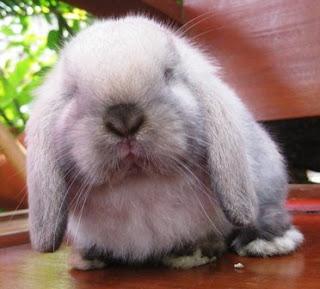
The Holland Lop rabbit is known as an excellent breeder. It is characterized for having a bulky, stocky and a muscular body. The shoulders and chest should be broad and well filled, same as the hindquarters. The head being massive in appearance setting high on the shoulders and close to the shoulders showing no neck. The legs are to be short, thick, straight, and heavily boned for the size of the animal. Ears are to be bell-shaped and short, no longer than 1 inch below the chin.

The Netherland Dwarf rabbits were developed in Europe and are thought to be based on the British Polish breeds. It is suggested that these early dwarf rabbits were seen in Holland, which is where they got the name "Netherland" dwarf rabbits. The main feature of Netherland Dwarf rabbits is their small size. - weighing only 2 to 2 1/2 lbs. They are very compact, with short little ears that stand straight up. Their fur is short, dense, soft, and glossy.

Jerry Woody looks close to Teddy but it has shorter hair on its face. When it is a full maturity, the body is bigger.

Woody Toy look almost alike Teddy Bear because it was developed from Teddy to make it smaller. Woody Toy has short triangle ear.
Monday, February 2, 2009
Let Your Rabbit Exercise Everyday
Saturday, January 31, 2009
Luke Fook With New Home

Tuesday, January 27, 2009
Insight My Blog



